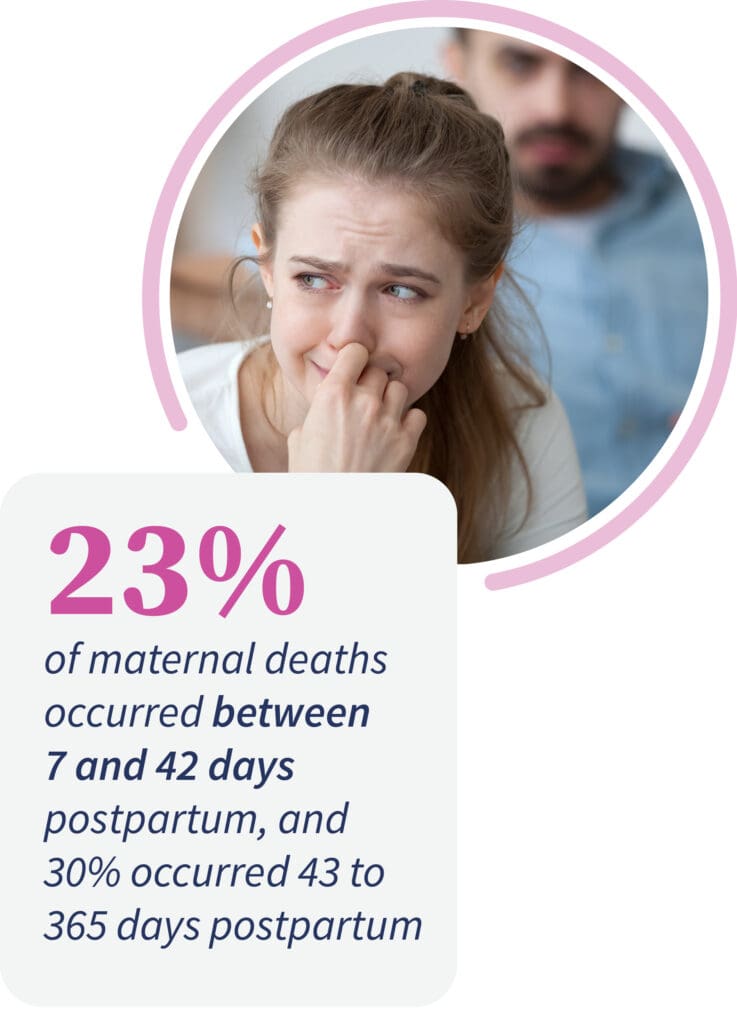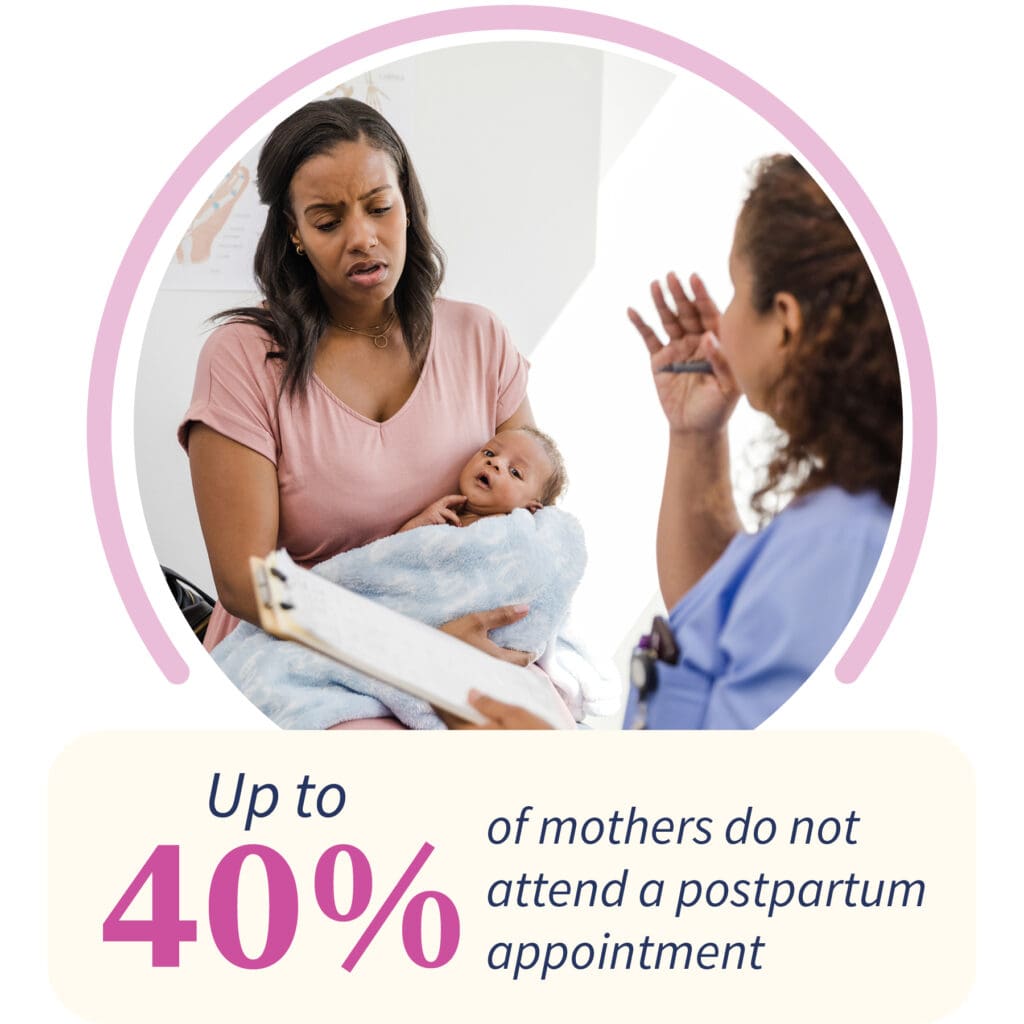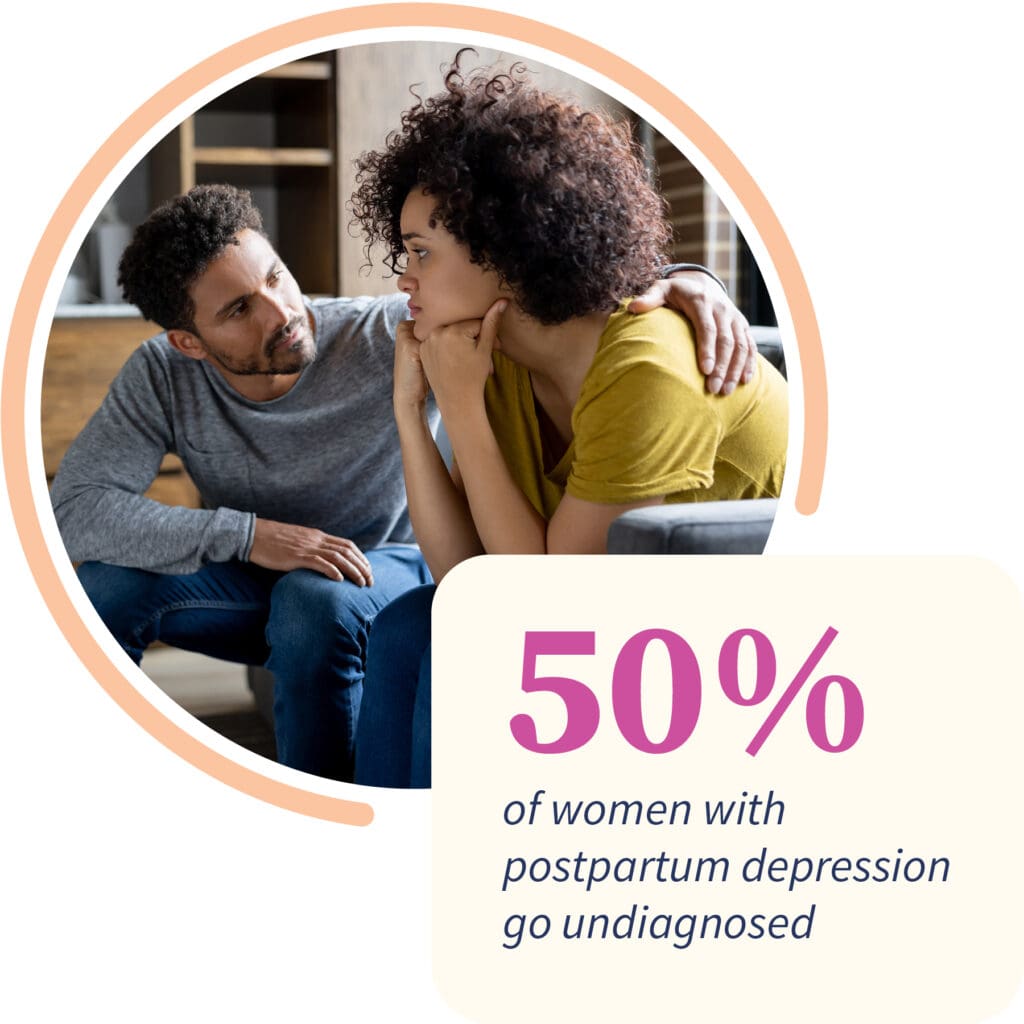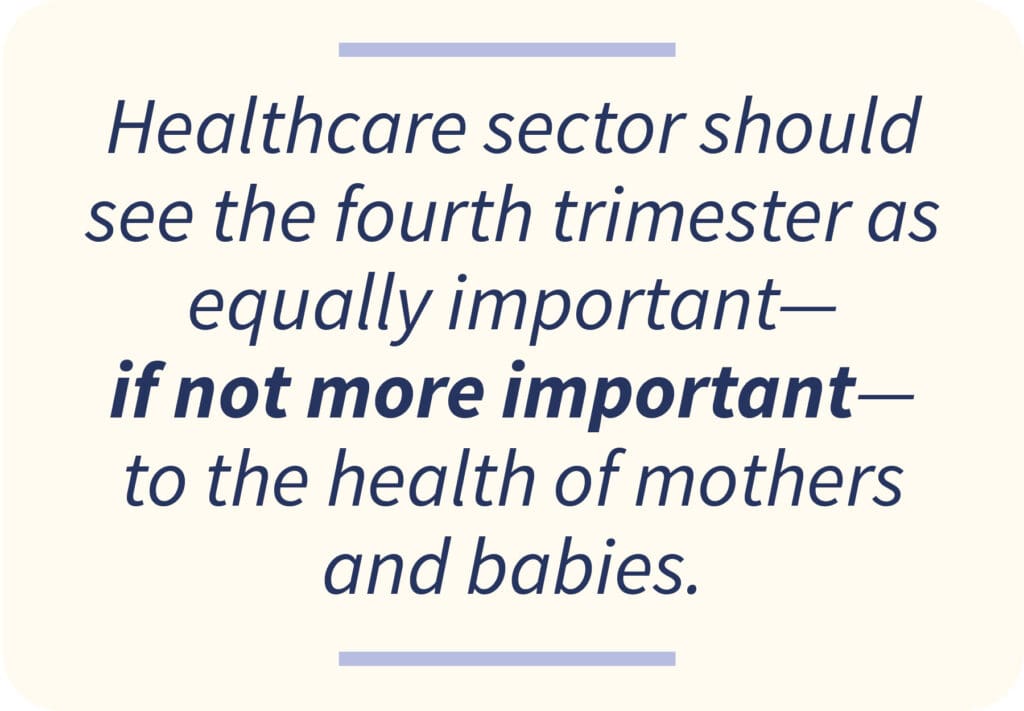 Filed Under: Maternal Health
Filed Under: Maternal HealthThe Fourth Trimester: Gaps in Postpartum Care

Amidst the increasing spotlight on maternal health outcomes, the importance of postpartum care is also receiving delayed recognition. It’s common knowledge that women require specialized support and care to guarantee healthy pregnancies and births, but the fourth trimester—those three months following delivery—has historically been under-emphasized in terms of its impact on the long-term health outcomes for mothers and babies.
According to a CDC study, 23% of maternal deaths occurred between seven and 42 days postpartum, and 30% occurred 43 to 365 days postpartum. And while people and providers are broadly aware of postpartum depression as the signature fourth trimester health challenge, it’s become clear that we need to widen the aperture and look at a range of mental and physical health repercussions after birth.

As we look to not only decrease maternal mortality rates, but also find ways to help mothers and their babies thrive, two key areas related to postpartum care rise to the top of the priority list.
1: Appointment Access & The Abandonment Factor
As we pointed out in our 2024 trends report, there’s a rise in virtual prenatal and postpartum care for a reason—lack of consistent access to in-person appointments remains a major barrier to maternal and child health.
When it comes to fourth trimester outcomes, it’s both prenatal and postpartum care that matters. One reason the “fourth trimester” terminology makes sense in the first place is that this period is part of one health journey that begins in the first trimester. Babies born to mothers who did not receive any prenatal care are nearly five times more likely to die than mothers who received early prenatal care.
Payers and providers are taking remote monitoring and telehealth appointments more seriously to lower the barriers to receiving quality prenatal care. But those same barriers to making and keeping appointments that affect mothers before birth—work schedules, lack of transportation, maternal care deserts—are still in place after giving birth, and compounded by the challenges of taking care of a newborn.
In fact, it’s estimated that up to 40% of mothers do not attend a postpartum appointment. Some of this can be accounted for by access issues, and some is due to a lack of emphasis on the part of providers. Despite the fourth trimester being the riskiest time for mothers, most recent interventions have focused on the hospital setting at the time of delivery as opposed to the ensuing weeks at home. This ‘abandonment factor’ means that many women feel the most alone, and least taken care of, during the riskiest time.

2: Broader, Deeper Mental Health Support
Roughly 1 in 7 women experience postpartum depression—and although many mothers are familiar with this possibility before it arises, new mothers are often surprised by the number of distinct mental health conditions and their varying levels of severity that occur during the fourth trimester.
For instance, the “baby blues” is a relatively temporary experience that peaks in the first week after delivery and usually subsides within two weeks. Affecting up to 85% of women, it’s marked by mood swings, anxiety, and sleeplessness. Though it is not actually considered a psychiatric illness, it is a risk factor for postpartum depression.
Postpartum depression, meanwhile, is considered a major depressive episode, and can last up to a year or longer. As opposed to the baby blues, it’s not recommended to wait for this to resolve on its own, and a range of treatment options may be appropriate. Other mental health conditions are rarer, including postpartum psychosis, perinatal anxiety disorders, Obsessive Compulsive Disorder, Posttraumatic Disorder, and Bipolar Disorder, which has its first onset for some women during pregnancy or in the fourth trimester. Many women are not aware that they may be at higher risk for these conditions after birth, and delayed diagnosis and treatment can compromise their quality of life and put their families at risk.

Screening and diagnosis is a major part of the picture when it comes to improving maternal mental health outcomes. Fifty percent of women with postpartum depression go undiagnosed, despite it being the most common health complication after delivery. Of course, this challenge relates back to both postpartum appointment access and the “abandonment” factor—the lack of consistent postpartum screenings is one clear opportunity for change. At the beginning of this year, the state of Arkansas instituted a new requirement that providers ask mothers to opt into depression screenings within the first six weeks of their postpartum period, and they’re not the first state to go this route. However, questions remain not only about the depth and sophistication of these screenings, but also the ability for women to actually get the follow-up care they need given nationwide mental health staffing shortages.

Looking Ahead
It’s clear that women need support after delivery—not only for the sake of their own health, but also that of their babies, who require healthy caretakers (and may even suffer cognitive development delays as a result of maternal depression).
The more the healthcare sector can think of the fourth trimester as equally—if not more—important to the health of mothers and babies as pregnancy and the delivery setting, the sooner we’ll see better outcomes.





 Prev
Prev